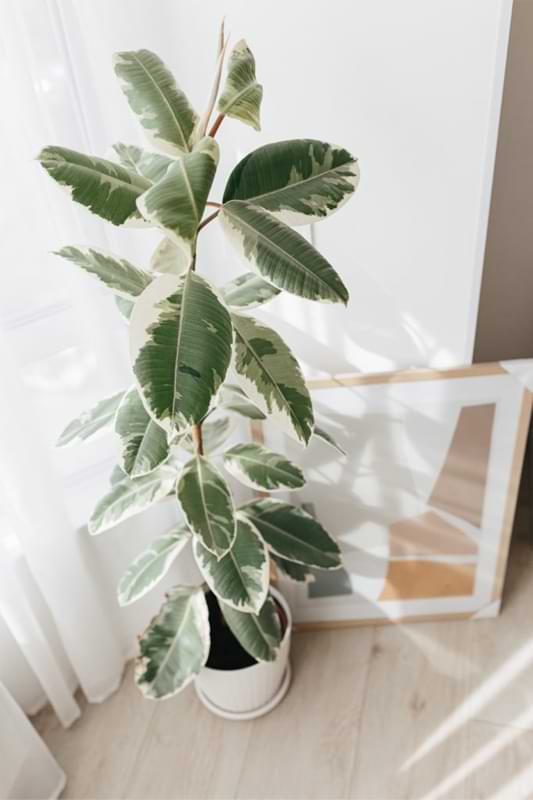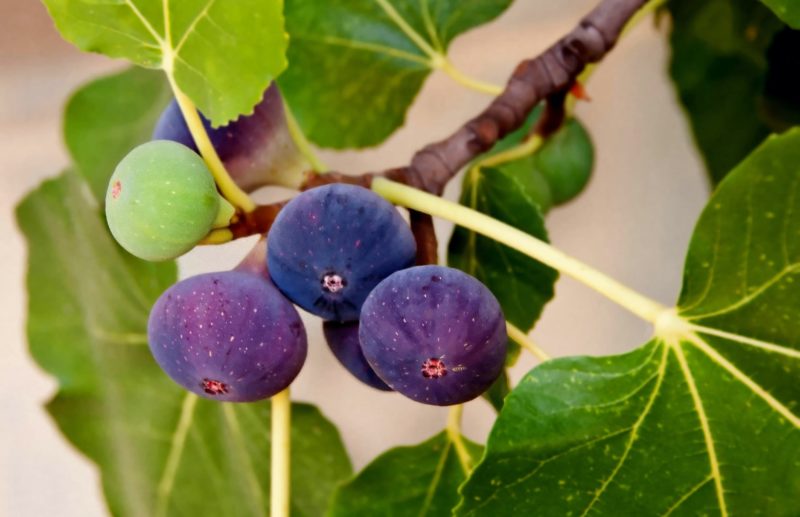With their large, violin-shaped leaves and striking veined texture, it’s no wonder fiddle leaf fig trees are among the most coveted houseplants today. But did you know there are actually several different varieties of fiddle leaf fig to choose from?
While they share a lot of the same care needs, each type has its own unique traits. Below we’ll explore some of the most popular fiddle leaf fig types so you can find the perfect fit for your home.
Common Fiddle Leaf Fig
The standard fiddle leaf fig (Ficus lyrata) is by far the most common variety. This is the iconic fiddle leaf fig tree with broad, elegant leaves that resemble a violin or fiddle.
Mature plants can reach staggering heights of 5-10 feet indoors. Their bold, architectural look makes them ideal statement plants in living rooms offices and other spaces.
The common fiddle leaf fig needs bright, filtered light and consistent moisture. Their large size also means they can be tricky to maneuver around the house. But their majestic presence is worth the extra care!
Bambino/Dwarf Fiddle Leaf Fig
For those short on space, the bambino or dwarf fiddle leaf fig delivers big style in a petite package. Topping out around 2-4 feet tall, the bambino stays much more compact than standard fiddle leaf figs.
Their small stature makes them perfect for desks, counters, and tabletops. Bambino fiddle leaf figs also have smaller leaves than regular fiddle leaf figs. But they boast the same distinctive veining and violin silhouette on a smaller scale.
Ficus Audrey
The Ficus Audrey has emerged as another rising star in houseplants. Its thick rounded leaves have a velvety texture and lack the dramatic lobes of traditional fiddle leaf figs.
But the Audrey offers greater flexibility in lighting and watering needs. It tolerates lower humidity and indirect light better than its fiddle leaf cousins. For beginners or busy folks, the easygoing Audrey may be a better choice than the more finicky fiddle leaf fig.
Variegated Fiddle Leaf Fig
Variegated fiddle leaf figs showcase gorgeously painted leaves in shades of cream, white, and light green. The striking coloration occurs along the edges and central veins of the typically all-green leaves.
However, the variegated fiddle leaf fig is still quite rare Due to difficulties propagating them, you’re unlikely to find these at your local nursery But their rarity only enhances their appeal as a special showstopper plant!
Compacta Fiddle Leaf Fig
With naturally dense, compact growth, the compacta fiddle leaf fig variety lives up to its name. It reaches just 3-5 feet at maturity, staying bushier than the open, spreading form of the standard fiddle leaf fig.
The compacta fits better in smaller spaces without compromising the bold, sculptural look of fiddle leaf fig leaves. Its slower vertical growth also makes the compacta easier to manage than larger varieties.
Narrow Leaf Fig
As the name suggests, this type has very long, slender, lance-shaped leaves that grow in crowded clusters. The narrow leaf fig’s downward arching foliage creates a graceful, cascading appearance.
New leaves emerge in shades of pink and red before darkening to deep green at maturity. Their unique shape and draping habit give them an exotic, tropical flair.
Council Tree Fig
Also called lofty fig, the council tree fig bears lighter green, elongated leaves with extra prominent veining. Many also showcase colors like cream, lime green, or yellow along the margins or central vein.
At 40 feet tall in nature, council tree figs grow enormous outdoors. But they make for an excellent indoor tree as well. Their large leaves and vivid variegation provide stunning year-round interest.
Finding the Right Fit
With options like dwarf varieties perfect for desks to giant statement plants, there’s a fiddle leaf fig to suit any space. Consider your room size, lighting, and care commitment when selecting.
Fiddle leaf figs require relatively high humidity and consistent moisture without overwatering. Their large leaves also need adequate space. But their sculptural presence rewards proper care.
Whichever fiddle leaf fig variety you choose, following best care practices will keep it looking lush. Trim back the growth, dust the leaves regularly, and watch the light and watering. Then you’ll be able to enjoy your fiddle leaf fig for years to come!
Fiddle Leaf Fig Plant | Most Common of the Fiddle Leaf Fig Varieties
As plants go, the fiddle leaf fig plant is a rock star among houseplants. A mainstay on Instagram, the fiddle leaf fig shows no signs of slowing down. If you’re up for a challenge, you’re a good candidate for the fiddle leaf fig. The plant has large and elongated leaves that are shaped like, well, a fiddle. Humidity is the name of the game, and investing in a good humidifier for your plant is essential. Make sure your fiddle leaf fig gets plenty of indirect sun, check the soil’s moisture before you water your plant, and invest in a good fiddle leaf fig plant food to ensure a robust and happy plant. In return, fiddle leaf figs purify the air like no other by removing toxins and releasing pure oxygen.
The Ficus Audrey is the national tree of India. It is a less serious cousin of the fiddle leaf fig. It could be better for you if you are busy and don’t have much time to spend on it. It’s suitable for city dwellers who mainly have filtered light, and it does better in more moist soil.

Variegated Rubber Plant
Oh, what makes that ant think he can move that different-colored rubber tree plant? Of course, it’s hope. Different from other rubber tree plants, a variegated rubber plant’s leaves are red, cream, yellow, and green. It needs to be watered every 10 to 14 days in the winter and every 5 to 7 days in the summer. The variegated likes shade.
If you’re interested in one of the fiddle leaf fig varieties, but you’re unsure about your abilities, then the bambino/dwarf fiddle leaf is your plant with training wheels. As with all plants, an investment in a good moisture meter can help you avoid heartache down the road. Bambinos need fast-draining soil, good plant food, and indirect sun, and since it’s a tropical plant, it also loves humidity.
Fiddle Leaf Fig Care Guide! // Garden Answer
FAQ
Are there different kinds of fiddle leaf figs?
Is there a difference between a fiddle leaf fig and a fiddle leaf fig tree?
Can fiddle leaf figs take full sun?
- The Ultimate Guide to Growing Strawberries in Raised Beds - August 8, 2025
- No-Dig Garden Beds: The Easiest Way to Grow a Beautiful Garden - August 6, 2025
- How to Protect and Preserve Wood for Raised Garden Beds - August 6, 2025

